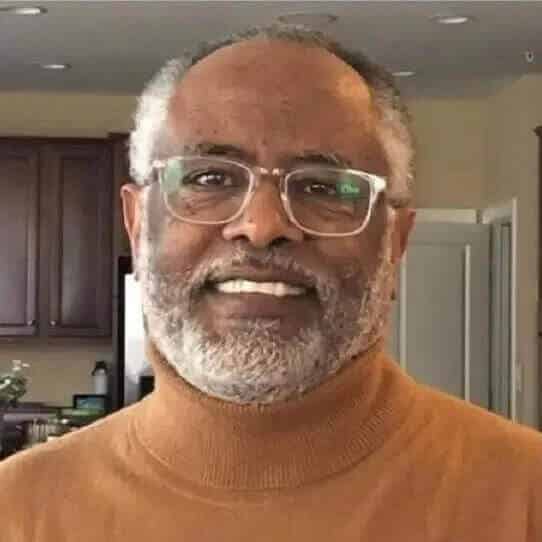By J. Bonsa
More than 70 people have been killed and dozens wounded in an ongoing crackdown on peaceful protesters in Oromia. One of the underlying causes of the prevailing tense political situation is Ethiopia’s bogus claim about “miraculous” economic growth in the last decade.
The youth is not benefitting from the country’s supposed growth and doesn’t anticipate the fulfillment of those promises given the pervasive nepotism and crony capitalism that underpins Ethiopia’s developmentalism.
The ruling Ethiopian People’s Revolutionary Democratic Front (EPRDF) came to power in 1991 and briefly experimented with democratic transition. However, a little over a decade into its rule, the party’s former strongman, the late Meles Zenawi, realized that their pretentious experiment with liberal democracy was not working. Zenawi then crafted a dubious concept called, “developmental state.”
Stripped of the accompanying jargons and undue sophistications, Zenawi was simply saying that he had abandoned the democratic route but will seek legitimacy through economic development guided by a strong hand of the state. This was a ploy, the last ditch attempt to extend EPRDF’s rule indefinitely.
Using fabricated economic data to seek legitimacy and attract foreign direct investments, the regime then advanced narratives about its double-digit economic growth, described with such catch phrases as Ethiopia rising, the fastest growing economy in the world and African lioness. The claims that EPRDF has delivered economic growth at miraculous scales has always been reported with a reminder that it takes several decades to build democratic governance. The underlining assumption was that, as long as they deliver economic growth, Ethiopia’s leaders could be excused on the lack of democracy and human rights abuses associated with the need for government intervention in the economy.
EPRDF spent millions to retain the services of expensive and well-connected Western lobbying firms to promote this narrative and create a positive image of the country. These investments were also accompanied with a tight grip on the local media, including depriving foreign reporters’access if they cross the government line. Ethiopia’s communication apparatus was so successful that even serious reporters and analysts started to accept and promote EPRDF’s narrative on rapid economic growth.
However, a few recent events have tested the truthfulness of Ethiopia’s economic rise. Drought and the resulting famine remain the Achilles heels of the EPRDF government. The government can manipulate data on any other sector, including the aggregate Gross Domestic Product, and get away with it, but agriculture is a tricky sector whose output is not so easy to lie about. The proof lies in the availability of food in the market, providing the absolute minimum subsistence for the rural and urban population.
The sudden translation of drought into famine raises serious questions. For example, it is proving difficult to reconcile the country’s double-digit economic growth with the fact that about15 million Ethiopians are currently in need of emergency food aid.
Rampant famine
Except for some gullible foreign reporters or parachute consultants, who visit Addis Ababa and depart within days, serious analysts and students of Ethiopian economy know that authorities have often fabricated economic statistics in order to generate fake GDP growth. For a trained eye, it does not take a lot to find inconsistencies in the data series. In fact, Ethiopia’s economic growth calculus is so reminiscent of Enron accounting. (See my recent pieces questioning EPRDF’s economic policies, including anomalies in the alleged achievements of millennium development goals, crony businesses, devaluation, external trade andfinance.)
The tacit understanding in using GDP as a measure of economic growth is that responsible governments generate such data by applying viable international standards and subjecting the data to scrutiny and consistency checks.
Unfortunately, these standards are not foolproof; irresponsible governments with mischievous motives can abuse them. There is credible evidence that show Ethiopian authorities deliberately inflated economic statistics to promote feel-good, success stories.
Let’s take the agricultural data, which is timely and topical given the ongoing famine. This came to light recently as the European Union tried to understand anomalies in Ethiopia’s grain market, particularly persistent food inflation which the EU found incompatible with the agricultural output reported by the Central Statistical Authority (CSA) of Ethiopia.
The EU’s Joint Research Centre (JRC) then developed the technical specification for studying the scope of the Cereal Availability Study in order to account for the developments in the Ethiopian cereal markets. The International Food Policy Research Institute (IFPRI) was selected to carry out the study.
Figure 1 (above) compares the EU-sponsored survey and the Ethiopian government’s survey produced by the CSA. I am using the data for 2007/08 for comparison. The negative numbers indicate that the IFPRI estimates were consistently lower than the CSA data. For instance, CSA overstated cereal production by 34 percent on average. This ranged from 29 percent for maize to 44 percent for sorghum. The actual amount of Teff produced is lower by a third of what’s reported by the CSA.
The research team sought to explain this “puzzle” by examining the sources of the confusion, the methodological flaws that might have led CSA to generate such exaggerated economic data. Toward that end, they compared CSA’s crop yield estimates with comparable data from three neighboring countries: Kenya, Tanzania, and Uganda (see Figure 2).
From 2000 to 2007, the average increase in cereal yield for these countries, including Ethiopia, was 19 percent. Yet the CSA reported a whopping 66 percent for Ethiopia’s yield growth. The country was not experiencing an agricultural revolution to justify such phenomenal growth. It is unrealistic that Ethiopia’s yield growth would be greater than the neighboring East African countries, particularly Kenya, where the agricultural sector is at a much more advanced stage. If anything, the reality in Ethiopia is closer to Uganda, which did not report any yield increase during that period.
This reveals the extents of data manipulation by Ethiopian authorities to create an inexistent economic success story and seeks political legitimacy using a bogus record. We now know the widespread distortions in official statistics on cereal production thanks, in no small part, to EU’s intervention in sponsoring a study and explaining the disparities. Cereals represent only a sub-sector in the agricultural realm. It is likely that worse distortions would be revealed if similar studies were done on Ethiopia’s growth statistics in other sectors, including manufacturing and service divisions.
‘Poverty reduction’
The IMF has praised Ethiopia for achieving accelerated growth with a focus on equity and poverty reduction, a challenging dilemma for most countries. However, a closer look at three interconnected facts turns this claim on its head.
First, as noted above, Ethiopia’s agricultural output has been inflated by 34 percent on average. Second, a 33 percent poverty reduction since 2000 is widely reported. Third, there is a consensus that poverty reduction has happened mostly in rural Ethiopia. Now we put these three facts together and apply a simple logic to establish that the 33 percent poverty reduction is explained by the 34 percent exaggerated agricultural outputs. Notice that it is not by accident that the two percentage points are almost identical. Therefore, the ups and downs cancel each other out. In the best-case scenario, poverty rate must remain at the same level as in 2000.
The World Bank, IMF and other donors have often anchored their conclusions on poverty reduction on alleged changes in the agricultural sector, where the bulk of the poor live and work. Little do they know that the data they used to compute the poverty index comes from agricultural statistics with hugely inflated yield assumptions as shown above.
This raises the question: where has the billions of dollars in bilateral and multilateral aid pumped into Ethiopia in the name of poverty reduction and the millennium development goals gone?
‘The enclave economy’
The ‘Ethiopia rising’ storyline is a standard set by foreign correspondents who often repurpose official government press releases, or report based on the construction projects in the capital, Addis Ababa.
For example, Bloomberg Africa’s, William Davison, often uses the proliferating high-rise buildings in Addis Ababa as tangible evidence of Ethiopia’s double-digit economic growth. In his latest whitewash, Davison writes, “such growth is already visible in parts of the capital, where shopping malls and luxury hotels are sprouting up.” That a veteran reporter for a business website unashamedly passes judgment on economic success by referring to heights and width of buildings underscores his shallow understanding of the country’s social and political fabric.
Here are some of the questions that reporters aren’t asking and seeking answers for: Who owns those building? Where did the investment money come from? Are there any firm linkages between these physical infrastructures and the rest of the Ethiopian economy? I have partially answered some of these questions in a previous piece and will soon provide additional insights.
For now, I would like to draw attention to the existence of an “enclave economy” within the mainstream Ethiopian economy. This enclave is made up of highly interconnected crony businesses, which are owned and operated by Tigrean elites, who also have a tight grip on the political and military command structures. Take, for example, the Endowment Fund for Rehabilitation of Tigray (EFFORT), a business conglomerate affiliated with the Tigrean People’s Liberation Front (TPLF). EFFORT has a humble origin in the relief and rehabilitation arm of the TPLF. However, it has undergone amorphous growth and now controls the commanding heights of the Ethiopian economy. By some estimates, EFFORT now controls more than 66 business entities. Since its “rehabilitation” function is obviously redundant, I have previouslysuggested, “it should instead be renamed as the Endowment Fund for Rendering Tigrean Supremacy (EFFORTS).”
The EFFORTS controlled enclave and related military engineering complexes have created a semi-autonomous economy in Ethiopia. They made smart choices and specialized in engineering and construction businesses. This means they do not have to rely on the Ethiopian public for their products; instead, each specialize in separate industrial branches and buy from each other and also sell to the government, which is also in their hand. The huge government infrastructural projects necessitated by the “developmental state” model create business opportunities for these engineering companies.
The enclave economy is only loosely linked to the mainstream economy and it does not benefit the bulk of the Ethiopian people in any meaningful way. The luxury hotels and supermarkets that Davison refers to cater for the needs of the affluent business classes, their families, and the expatriate community.
In other words, Ethiopia’s miraculous economic growth, if it in fact exists, must have happened only in the enclave economy. Statistically, it is possible to generate a double-digit economic growth at the national level through a combination of some real astronomical growth in the enclave component and stagnation or declines hidden, through some accounting tricks, in the rest of the economy.
Lock-in style of reporting
Unfortunately, the unquestioned reporting on Ethiopia’s economic success has continued. Even the EU study appears to have been shelved, or deliberately ignored despite the significant findings. Even as a fifth of the population is in need of emergency aid, the World Bank is sticking with the outdated data and has recently released a sensationalized report entitled “Ethiopia’s Great Run: the growth acceleration and how to pace it.”
The ensuing famine has shaken the foundation of Ethiopia’s growth narrative, yet western NGOs and media outlets appear to suffer from the lock-in effect in adopting consistent storylines. They continue to link and refer to the World Bank, IMF and others reports and indexes by multilateral organizations.
That’s why we continue to see comical headlines such as “Ethiopian Drought Threatens Growth as Cattle Die, Crops Fail,” which assumes that Ethiopia’s growth is actually occurring. This acquiescence does not only display ignorance, but it also underscores an effort to evade accountability for previous mistakes and failure to report accurate information.
In a recent interview with The Ethiopian Reporter, Prime Minister Hailemariam Desalegn made a rare and fateful admission: “if we crave for too much praises for our achievements, we might run the risk of undermining the challenges we are facing. These challenges could grow bigger and become irreversible and that would be detrimental.”
Over the past 25 years, the EPRDF worked tirelessly to create a distorted image of the country and began craving and lobbying foreigners for praises.
Enron’s success involved an elaborate scam, but the firm was named “America’s Most Innovative Company” for six consecutive years. This fame did not stop Enron from crumbling. EPRDF’s fate will not be any different. The Oromo uprising has already started the unraveling of its elaborate scams devised to attain legitimacy on the back of non-existent economic and democratic advancement.
*The writer, J. Bonsa, is a researcher based in Asia.
Ethiopia's fake economic growth borrows from ENRON's accounting .
Latest from Blog

Jawar Mohammed: From Strife to Unity? Part III Political Opportunity or Opportunism?
By Worku Aberra (For the convenience of readers, the article is presented in installments) Jawar Mohammed asserts that he has chosen to break his silence and re-enter the political arena out of

The Power of Dialogue and Strong Institutions: A Path to a Strong Ethiopia
Dr. MeKonnen Birru ([email protected]) In any country, the true strength lies not in the power of a single leader, but in the resilience of its institutions, the unity of its people, and

Jawar Mohammed: From Strife to Unity? Part II Jawar: A Potential Bridge Builder?
By Worku Aberra (For the convenience of readers, the article is presented in installments) Jawar has indicated his willingness to function as a bridge builder among the various groups in the struggle

Jawar’s Political Transformation: Toward Ethiopian Spring or Oromo Winter?
Yonas Biru, PhD This short piece is triggered by Jawar’s interview with Tedros Tsegaye of Reyot Media. It is not common for Ethiopian politicians to appear on what they consider to

Abiy Ahmed’s Diplomatic Missteps: From Somaliland’s Port Lease to Shifting Allegiances with Somalia
Dr. MeKonnen Birru ([email protected]) In the intricate and volatile geopolitical landscape of the Horn of Africa, Prime Minister Abiy Ahmed of Ethiopia finds himself grappling with a series of diplomatic missteps that

Ethiopia: Washington Update – January 10, 2025
Washington Update -by Mesfin Mekonen January 10, 2025 1, Ethiopians continue to demonstrate in Ethiopia, Washington, DC, London and around the world to condemn the Abiy government’s human rights abuses, especially drone

Jawar Mohammed: From Strife to Unity? Part I: The Need for Unity
By Worku Aberra (For the convenience of readers, the article is presented in installments) In recent weeks, Jawar Mohammed has given a series of interviews to promote his new book, I Have

The Nobel Peace Prize Awarded to Abiy Ahmed Should Be REVOKED
(The Habesha) – Peace is the cornerstone of global stability, and every act that promotes it deserves due recognition. However, when the steward of such accolade falls short, it raises the question

Neither Naive to Believe Jawar nor Unnecessarily Critical of Him
Yonas Biru, PhD I am Neither naive to believe Jawar’s political transformation at face value, nor unnecessarily critical of him. We have witnessed the Oromummaa theology wither away like fleeting shadows. Oromummaa

How Ethiopia’s Low Energy Prices Facilitate BIT Mining’s Recycling of Bitcoin Machinery
By Tom Carreras|Edited by Nikhilesh De What to know: BIT Mining acquired 51 megawatts and 18,000 bitcoin mining rigs in Ethiopia in early December. The electricity costs in Ethiopia are so low

From Nobel Peace Prize to Power-Hungry Butcher Abiy Ahmed’s Dangerous Path to Military Domination
{The Habesha} – The agreement facilitated by Turkish President Recep Tayyip Erdoğan underscores Turkey’s expanding influence within the Horn of Africa, especially in the context of mediating regional disputes. By orchestrating discussions

Jawar Must Repent and Redeem to Succeed in His Political Transformation
Yonas Biru, PhD Let me start with two caveats. First, I want to see Jawar succeed in his political transformation because I want to see a peaceful and prosperous Ethiopia. As a

Ethiopia’s Orthodox Christians are celebrating Christmas with prayers for peace
Ethiopians observe Christmas with great fervor, demonstrating a profound commitment to their Orthodox Christian faith. Despite ongoing efforts to undermine Orthodox Christianity in the country, which include violent acts against its adherents

From Nobel Peace Prize to Political Turmoil Abiy Ahmed’s Impact on Ethiopia and America’s Strategic Missteps
[The Habesha] – At the core of the Horn of Africa, a recent peacekeeping initiative by the United States in Ethiopia has come to an unfortunate conclusion, resulting in a series of

